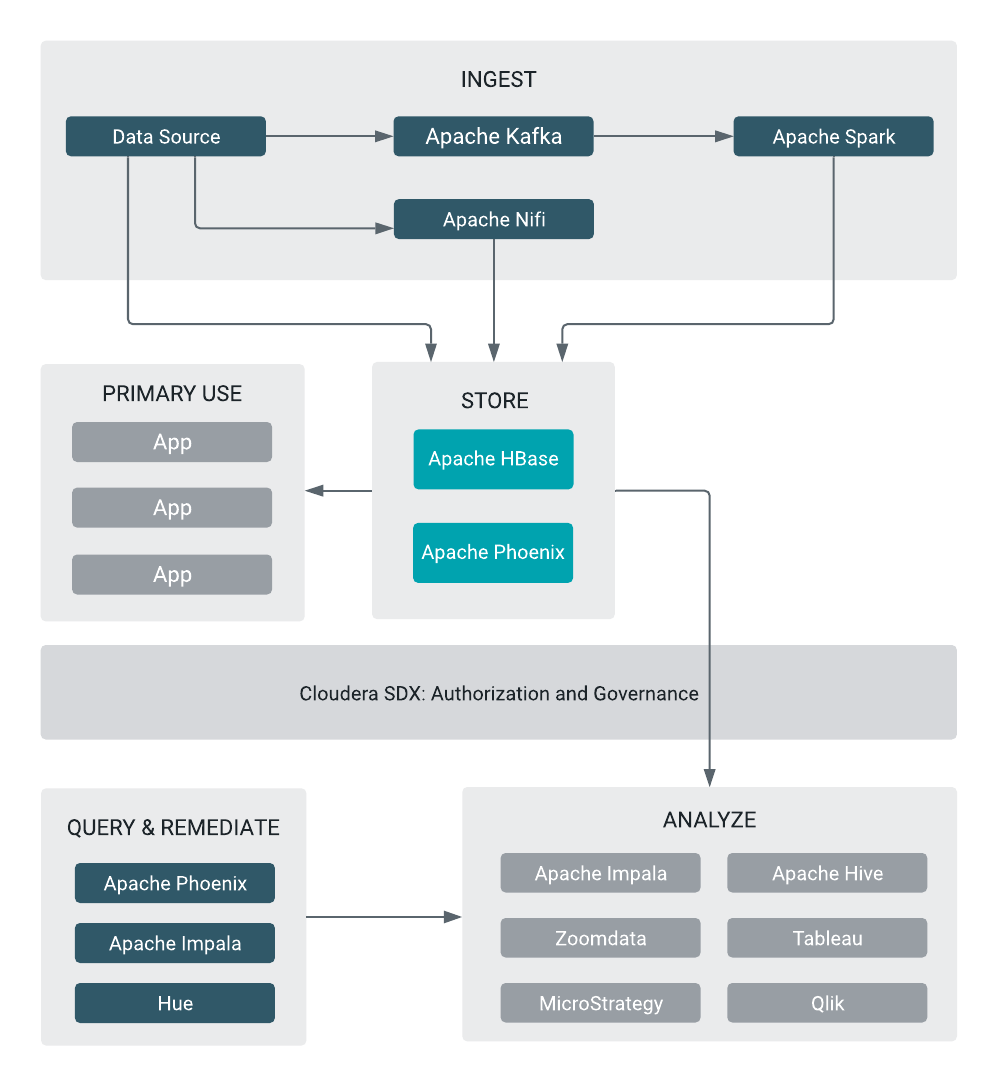Operational Database overview
Cloudera Operational Database delivers a real-time, always available, scalable operational database that serves traditional structured data alongside unstructured data within a unified operational and warehousing platform.
Cloudera Operational Database is powered by Apache HBase and Apache Phoenix. In Cloudera Operational Database, you use Apache HBase as a datastore with HDFS providing the storage infrastructure. You have the choice to either develop applications using one of the native Apache HBase API, or you can use Apache Phoenix for data access. Apache Phoenix is a SQL layer that provides a programmatic ANSI SQL interface. It works on top of Apache HBase, and it makes it possible to handle data using standard SQL queries and Apache Phoenix commands. You can use Cloudera Operational Database in the public cloud or on-premises. This overview topic covers information about the on-premises deployment.
On-premises
- CDP Private Cloud Base
Public cloud
- CDP Data Hub Operational Database template
- Cloudera Operational Database (COD) experience that is is a managed database platform as a service (dbPaaS)
Cloudera Operational Database plays the crucial role of a data store in the enterprise data lifecycle. The following graphic shows some of the elements in a typical operational database deployment.

The operational database has the following components:
-
Apache Phoenix provides a SQL interface that runs on top of Apache HBase.
-
Apache HBase provides the key-value stores with massive scalability, so you can store unlimited amounts of data in a single platform and handle growing demands for serving data.
-
Apache ZooKeeper provides a distributed configuration service, a synchronization service, and a naming registry.
-
Apache Knox Gateway provides perimeter security so that the enterprise can confidently extend access to new users.
-
Apache HDFS is used to write the Apache HBase WALs and HFiles.
- Hue provides a web-based editor to create and browse Apache HBase tables.
-
Cloudera Shared Data Experience (SDX) is used for security and governance capabilities. Security and governance policies are set once and applied across all data and workloads.


